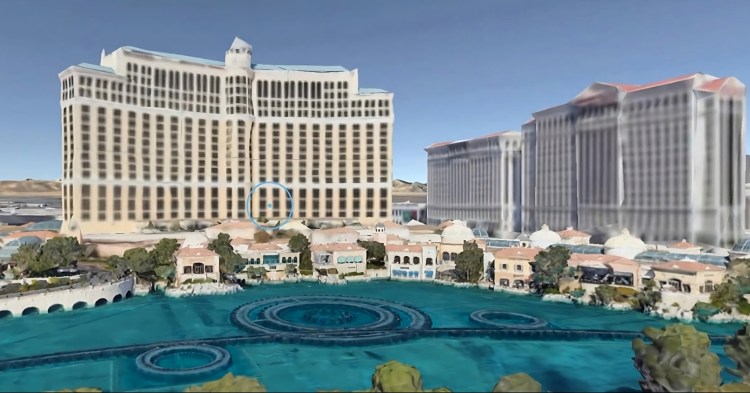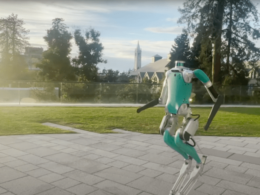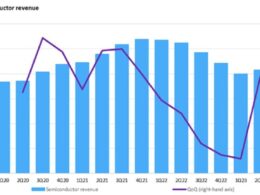With the Consumer Electronics Show (CES) taking place this week, many are curious about the ease of creating a digital twin of a city without any coding skills. The hype surrounding no-code tools has raised skepticism among creative designers, who question if they can quickly create virtual experiences. To put this to the test, Agora World CEO Ethan Berg was challenged to create a digital twin of Las Vegas in under 20 minutes, without any coding. The goal was to build an immersive experience that would take the user from their hotel to the convention center, with virtual elements highlighting notable locations along the way.
The Rise of No-Code Tools in Immersive Content Creation
Berg, who has a non-technical background focused on the business side of virtual reality (VR), accepted the challenge. Much to the surprise of many, he successfully created the immersive experience within just 10 minutes. This feat was accomplished using Agora World, a no-code virtual world development platform that allows creative agencies to design and deploy immersive experiences for major brands. Berg founded the company in 2019 because he recognized the difficulty in creating immersive content like virtual showrooms and product demos.
As more companies enter the space, it is becoming clear that the future of e-commerce lies in the adoption of 3D experiences. Alongside Agora World, other notable players in the no-code or low-code solutions industry include MetaVRse, Spatial, Blockade Labs, and Captic.io.
The Evolution of Immersive Commerce
Virtual reality (VR) has had a checkered past, with periods of great excitement followed by long periods of dormancy. However, with the imminent release of Apple’s Vision Pro mixed-reality headset and Meta’s new Quest 3 headset, 2024 is set to be the year where mainstream users begin consuming immersive content on a large scale. Alan Smithson, co-founder of MetaVRse and TheMall, believes that 2024 will see significant growth for immersive commerce. He notes that virtual shopping experiences have a unique advantage over traditional e-commerce in terms of social interaction.
To capitalize on this potential, MetaVRse is currently working on building the world’s largest virtual mall, TheMall.io. This virtual mall aims to be the go-to destination for brands and agencies seeking to create immersive shopping experiences for social groups.
Alvin Graylin, the global VP of corporate development at HTC, echoes the sentiment that 2024 will be a pivotal year for immersive computing. He attributes this to the release of next-generation products from major vendors, combined with the reduced costs of 3D content creation through AI tools.
The Challenges and Opportunities Ahead
While the rise of immersive commerce brings exciting opportunities, it also presents new challenges for consumers and policymakers. Virtual showrooms populated by AI-powered virtual spokespeople can provide persuasive sales, support, and customer service. However, these AI agents can wield superhuman persuasive skills, posing risks to consumers who may be easily influenced.
As a result, major brands need to start considering the inclusion of immersive content on their websites, which drives the need for user-friendly tools that require no coding expertise. Agora World, MetaVRse, and other companies are racing to develop fast and easy-to-use tools that allow anyone to create compelling 3D experiences, similar to how platforms like Wix and WordPress revolutionized website creation.
Achieving Immersive Realism with Digital Twins
Agora World’s ability to rapidly create digital twins of cities is demonstrated in a video showcasing the creation of a digital twin of Las Vegas in just 10 minutes. This efficiency is attributed to a grant from geospatial company Cesium, which provides an extensive database of geospatial 3D data and content for Agora World to leverage.
Digital twins have the potential to revolutionize small businesses by creating immersive replicas of their physical locations. Event Horizon Experiences is one company leading the way in this field, as they recently built a digital twin of a local Hyundai branch in Corona, Calif. Using geospatial data from Cesium and accessed through Agora World, they recreated the real-world surroundings. To further enhance customer experience, they integrated Convai to offer AI customer service representatives as virtual avatars.
Preparing for an Immersive Future
As we enter 2024, marketing professionals and policymakers alike should start considering the power of no-code tools to create digital twins and virtual showrooms. Immersive commerce is on the horizon, and it is poised to transform online shopping into a more engaging and natural experience. While widespread adoption may still take a few more years, virtual shopping is set to gain momentum and reshape the way we interact with online content.
Author: Louis Rosenberg









